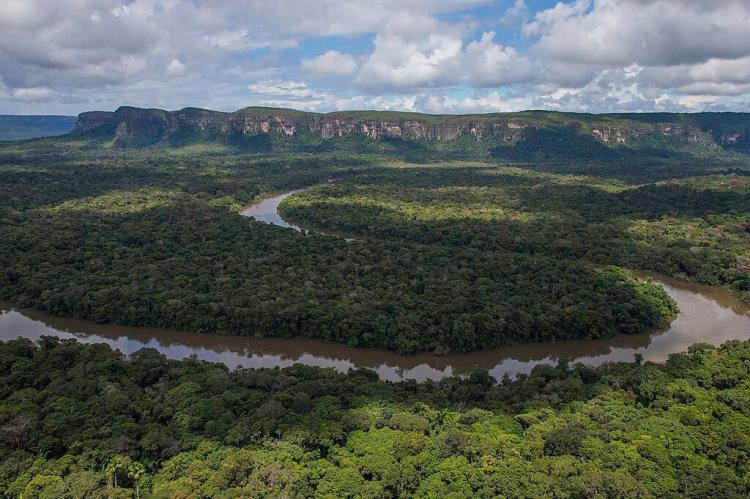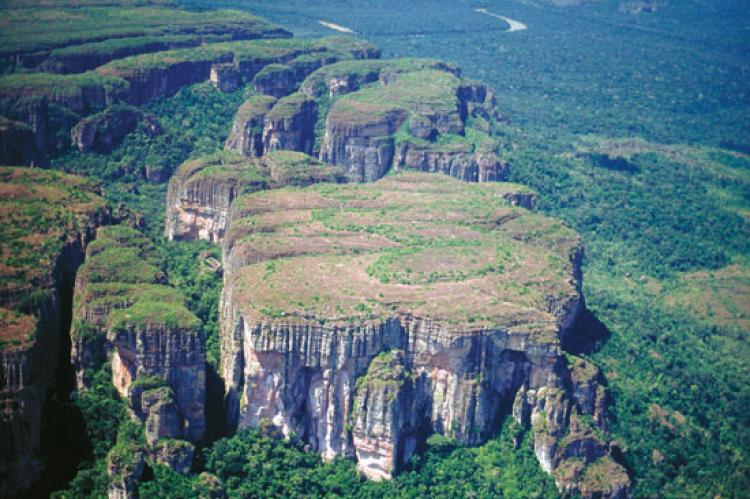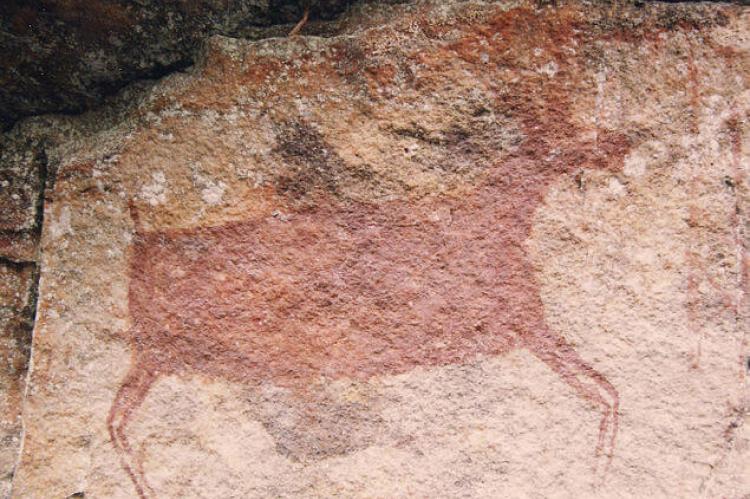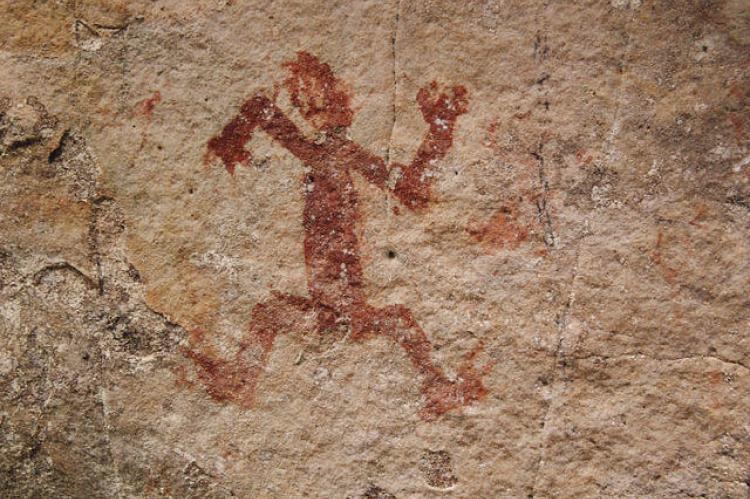Chiribiquete: Where Ancient Stone Embraces a National Sanctuary
Rising from the Colombian Amazon, the Serranía de Chiribiquete is a breathtaking sandstone plateau formed by erosion over millions of years. This remote range is at the core of Chiribiquete National Natural Park, a protected area of immense ecological and cultural significance.
The Serranía de Chiribiquete: Crown Jewel of a National Sanctuary
Rising dramatically from the heart of the Colombian Amazon, the Serranía de Chiribiquete stands as a breathtaking sandstone plateau, a geological marvel sculpted by the forces of nature over eons. This remote and rugged mountain range forms the very core of the expansive Chiribiquete National Natural Park (Parque Nacional Natural Serranía de Chiribiquete - Jaguar of the Yuruparí), a protected area of immense ecological and cultural significance. Encompassing a staggering area of approximately 4.3 million hectares (over 10.6 million acres), the park is intrinsically linked to the serranía, serving as a vital sanctuary for its unparalleled biodiversity and the remarkable archaeological secrets etched onto its rock faces.
The Serranía de Chiribiquete: A Geological Citadel Protected
The Serranía de Chiribiquete itself is a distinctive geological formation, primarily composed of resilient Precambrian quartzite sandstones that have withstood the relentless forces of erosion over vast geological timescales. This ancient bedrock, rising abruptly from the surrounding Amazonian lowlands, defines the dramatic topography of the region, characterized by towering vertical cliffs, flat-topped mesas reminiscent of the tepuis, deep canyons carved by ancient rivers, and intricate cave systems. Reaching elevations up to 900 meters (approximately 2,950 feet), the serranía creates significant altitudinal gradients that contribute to the park's diverse microclimates and habitats.
The establishment of the Chiribiquete National Natural Park directly recognizes and protects this unique geological formation, ensuring the preservation of its dramatic landscapes and the ecological processes that underpin them. The park's boundaries are largely defined by the extent of the serranía and its immediate surrounding buffer zones, acknowledging the inseparable link between the physical mountain range and its conservation.
Chiribiquete National Natural Park: A Biodiversity Hotspot Anchored by the Serranía
The Serranía de Chiribiquete, as the central feature of the Chiribiquete National Natural Park, forms the foundation for an exceptionally rich and diverse array of species. The park's location at a crucial biogeographical intersection, where the biodiversity of the Amazon rainforest converges with elements of the flora and fauna of the Guiana Shield, is directly influenced by the varied habitats provided by the serranía's diverse topography and geology.
The park's protection encompasses vast tracts of pristine lowland and upland rainforests blanketing the slopes and valleys of the serranía. It also includes specialized vegetation adapted to the nutrient-poor sandstone outcrops and unique microclimates found at different elevations within the mountain range. The Serranía de Chiribiquete, therefore, is not just a geological feature within the park; it is the structural backbone that supports this incredible biodiversity, providing refuge and varied niches for countless plant and animal species, including iconic Amazonian wildlife like jaguars, tapirs, and a multitude of primates and bird species. The park's existence is intrinsically tied to the preservation of the serranía's ecological integrity.
Ancient Echoes on Stone: Rock Art Protected within the National Park
Perhaps the most compelling aspect of the Serranía de Chiribiquete, and a key reason for the establishment and significance of the Chiribiquete National Natural Park, is its unparalleled wealth of ancient rock art. Thousands upon thousands of intricate paintings, predominantly in red ochre, adorn the walls of rock shelters and cliff faces throughout the serranía, all now protected within the park's boundaries. These artistic expressions, dating back as far as 20,000 years, are directly associated with the geological formations of the serranía, utilizing its natural rock faces as a canvas.
The Chiribiquete National Natural Park serves as the crucial guardian of this extraordinary archaeological record, ensuring its preservation from natural erosion and potential human damage. The park's management includes efforts to monitor and protect these sites, recognizing their profound cultural and historical significance as testaments to early human occupation within the Amazon basin, directly linked to the unique landscape of the serranía.
Chiribiquete National Natural Park: Confronting Threats to the Serranía's Integrity
Despite its remoteness and protected status as a National Natural Park, the Serranía de Chiribiquete faces increasing conservation challenges that directly threaten its long-term integrity. Deforestation in the surrounding Amazonian lowlands, driven by agricultural expansion and other human activities, can have cascading effects on the park's hydrological systems and ecological balance, impacting the very environment that the serranía supports.
Climate change poses a broader threat to the park's ecosystems, potentially altering rainfall patterns and increasing the risk of wildfires within the serranía's forests. The Chiribiquete National Natural Park plays a vital role in mitigating these threats through active management, surveillance, and efforts to promote sustainable practices in the surrounding regions. It directly safeguards the unique geological and ecological features of the Serranía de Chiribiquete.
Summary
The Serranía de Chiribiquete is a majestic sandstone plateau that forms the very heart of the Chiribiquete National Natural Park in the Colombian Amazon. This unique geological formation not only defines the park's dramatic landscape but also underpins its exceptional biodiversity, acting as a crucial refuge for a vast array of plant and animal life. Furthermore, the rock faces of the serranía within the park serve as an unparalleled repository of ancient rock art, offering profound insights into the region's prehistory. The Chiribiquete National Natural Park is, therefore, inextricably linked to the Serranía de Chiribiquete. It serves as its essential guardian, protecting its geological integrity, rich ecosystems, and invaluable cultural heritage for future generations. The park's existence highlights the crucial importance of acknowledging and preserving such distinctive natural and cultural landscapes.
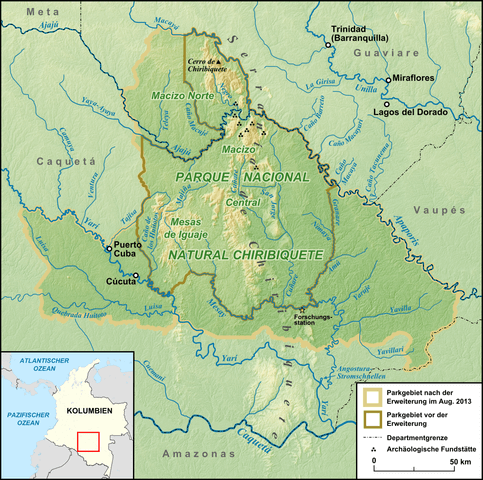
Map depicting the Chiribiquete National Park.
